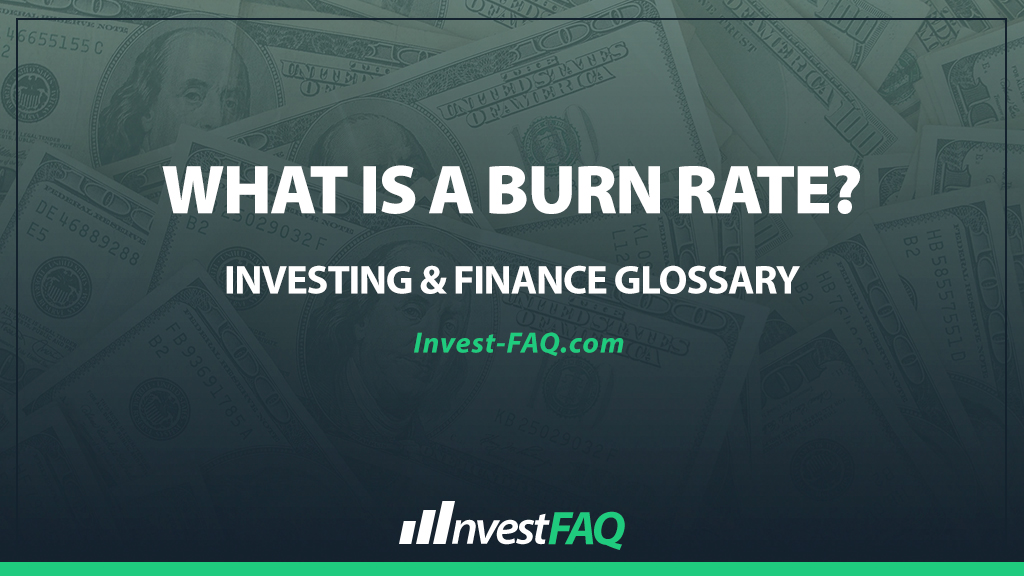
Burn Rate
Contents
A burn rate refers to the pace at which a company spends its cash reserves, especially in the context of startups and growth-stage companies. It is commonly measured on a monthly basis and is a critical metric for understanding how long a company can operate before it needs to generate additional revenue or secure further financing.
In the business landscape, particularly among startups, the burn rate is a vital indicator of financial health and sustainability.
It helps founders, investors, and stakeholders gauge the company’s cash runway—the amount of time before the cash reserves are depleted at the current rate of expenditure.
Understanding the burn rate is essential for strategic planning, including budget adjustments, fundraising efforts, and assessing the urgency for achieving revenue milestones or profitability.
Example of a Burn Rate
Let’s consider “NextGen Robotics,” a startup with $1 million in cash reserves. Over the past month, NextGen Robotics had total expenses of $100,000, including salaries, rent, marketing, and product development costs, without generating any revenue.
In this scenario, the burn rate is calculated as:
Monthly Burn Rate = Total Monthly Expenses = $100,000
With $1 million in cash reserves and a monthly burn rate of $100,000, NextGen Robotics has a cash runway of 10 months, indicating the company can continue operating at its current spending level for 10 months before running out of cash.
The calculation of the burn rate and cash runway provides crucial insight for NextGen Robotics. It quantifies the company’s financial timeline, highlighting the need for strategic decisions—such as reducing expenses, pivoting the business model, or initiating fundraising activities—to extend the runway and reach financial stability.
This example underscores the importance of monitoring the burn rate closely to manage resources effectively and ensure the company’s long-term viability.
Significance for Investing & Finance
The concept of a burn rate holds significant importance in accounting and financial management, especially for startups and growth-stage companies, for several reasons:
Cash Flow Management: It emphasizes the importance of managing cash flow efficiently to sustain operations and pursue growth opportunities.
Strategic Planning: Understanding the burn rate aids in strategic planning, helping companies set realistic timelines for achieving key financial milestones or securing additional funding.
Risk Assessment: The burn rate is a key metric for assessing financial risk, indicating how quickly a company is using its cash reserves and the potential need for immediate action to prevent financial distress.
Investor Communication: For companies seeking investment, the burn rate is a critical metric communicated to potential investors, reflecting the company’s financial health and management’s ability to control expenses.
In summary, the burn rate is a crucial financial metric that measures the speed at which a company depletes its cash reserves. It plays a vital role in financial planning, risk management, and investor relations, helping businesses navigate the challenges of growth and sustainability by making informed strategic decisions.
FAQ
How does a startup’s burn rate influence its fundraising strategy?
A startup’s burn rate directly influences its fundraising strategy by determining how much capital it needs to raise and the timeline for securing additional funds to sustain operations until it becomes cash flow positive or reaches its next financial milestone.
Can a company’s burn rate fluctuate significantly month to month, and what does this indicate?
Yes, a company’s burn rate can fluctuate significantly from month to month, indicating variable operational costs, one-time expenses, or changes in strategic investment; consistent monitoring is essential for understanding financial health and making necessary adjustments.
What measures can a company take to reduce its burn rate without stifling growth?
To reduce its burn rate without stifling growth, a company can implement cost-saving initiatives, streamline operations for efficiency, focus on high-return investments, and carefully manage non-essential spending.
How do investors interpret a high burn rate during a startup’s early stages?
Investors may interpret a high burn rate during a startup’s early stages as a sign of aggressive growth strategies or potential financial mismanagement, underscoring the importance of communicating the rationale behind expenditure levels and demonstrating a clear path to profitability.
